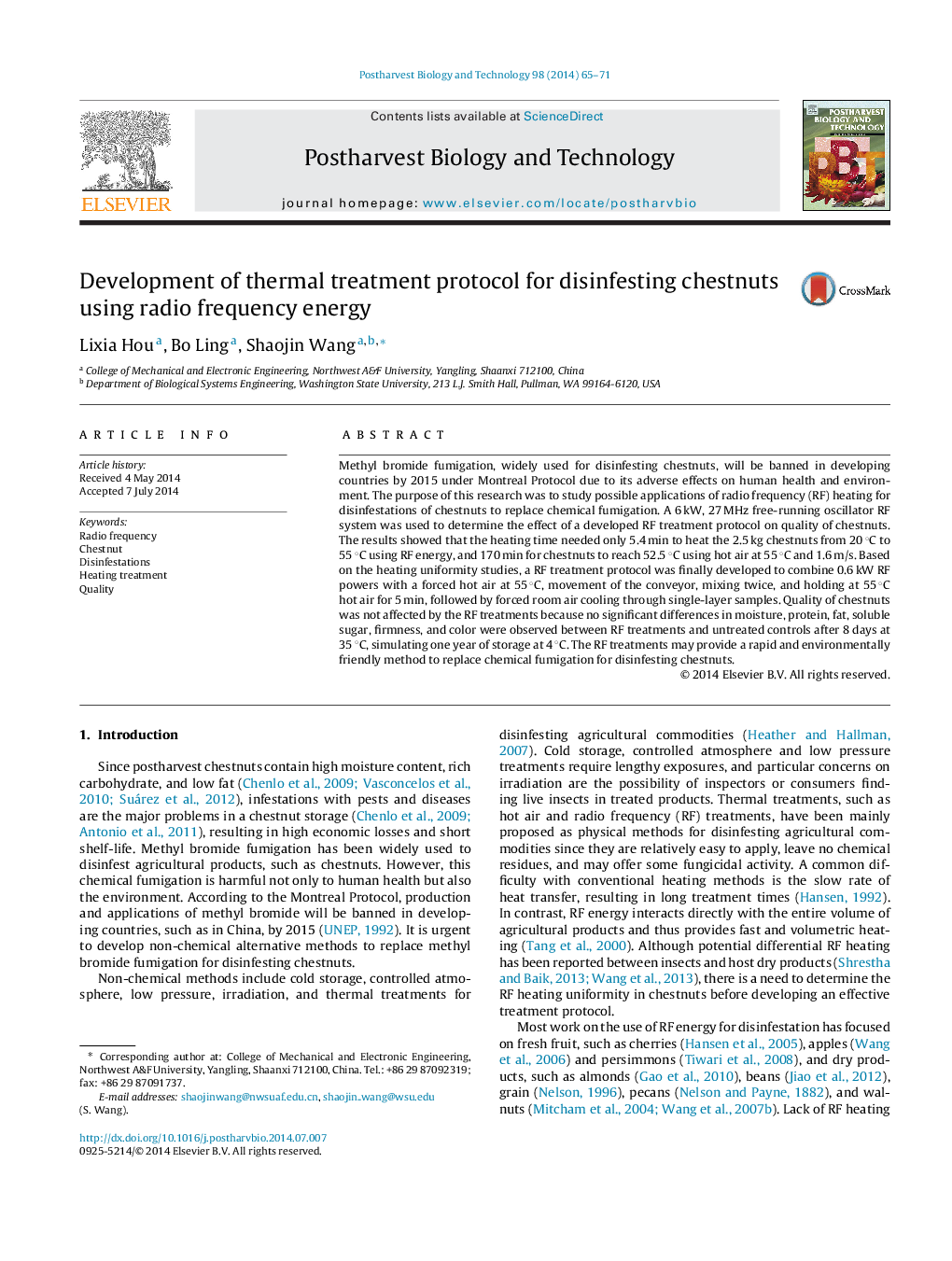| Article ID | Journal | Published Year | Pages | File Type |
|---|---|---|---|---|
| 4518242 | Postharvest Biology and Technology | 2014 | 7 Pages |
•RF heating uniformity was improved by forced hot air, movement, and mixing.•Treatment protocol using RF energy was developed for disinfesting chestnuts.•Quality of chestnuts was not affected by the RF treatments.•RF heating provides effective and physical methods for disinfesting chestnuts.
Methyl bromide fumigation, widely used for disinfesting chestnuts, will be banned in developing countries by 2015 under Montreal Protocol due to its adverse effects on human health and environment. The purpose of this research was to study possible applications of radio frequency (RF) heating for disinfestations of chestnuts to replace chemical fumigation. A 6 kW, 27 MHz free-running oscillator RF system was used to determine the effect of a developed RF treatment protocol on quality of chestnuts. The results showed that the heating time needed only 5.4 min to heat the 2.5 kg chestnuts from 20 °C to 55 °C using RF energy, and 170 min for chestnuts to reach 52.5 °C using hot air at 55 °C and 1.6 m/s. Based on the heating uniformity studies, a RF treatment protocol was finally developed to combine 0.6 kW RF powers with a forced hot air at 55 °C, movement of the conveyor, mixing twice, and holding at 55 °C hot air for 5 min, followed by forced room air cooling through single-layer samples. Quality of chestnuts was not affected by the RF treatments because no significant differences in moisture, protein, fat, soluble sugar, firmness, and color were observed between RF treatments and untreated controls after 8 days at 35 °C, simulating one year of storage at 4 °C. The RF treatments may provide a rapid and environmentally friendly method to replace chemical fumigation for disinfesting chestnuts.
